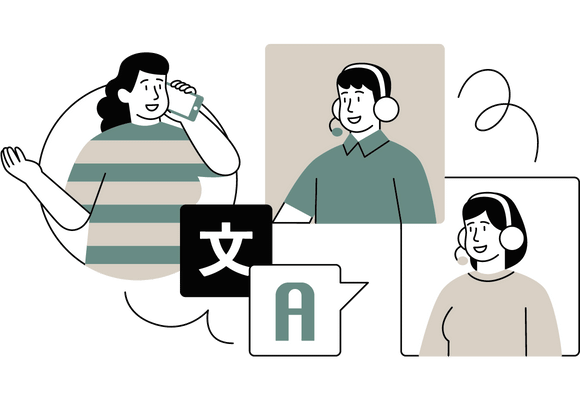
How To Teach Someone English
If you're looking to teach someone English, there are a few basic things you need to keep in mind. English is a difficult language to learn, and it can take a long time to become proficient in it. However, with patience and a good teaching method, you can help your student improve their English skills.
One of the most important things to keep in mind when teaching English is to focus on communication. The goal is for your student to be able to use English to communicate with others, so make sure to give them plenty of opportunities to speak. You can do this by having them engage in conversation with you and other students, as well as by having them complete tasks that require them to use English.
It's also important to make sure your student is constantly practicing their grammar. English grammar can be tricky, so it's important to drill it into your student's head. You can do this by giving them grammar exercises to complete, as well as by correcting their mistakes as they speak.
Finally, it's important to keep your student's interests in mind. Everyone learns differently, so you may need to try a few different teaching methods before you find one that works best for your student. If your student isn't interested in the topic you're teaching, they're not going to learn as well. Try to find topics that interest your student and focus on those.
If you keep these things in mind, you can help your student improve their English skills and become more proficient in the language.
What are the steps to teach someone English?
There are a number of steps that can be followed in order to teach someone English. The first step is to assess the learner’s level of English. This can be done by having the learner complete a test or by having a conversation with the learner to determine their level of fluency. Once the level of fluency has been determined, the teacher can then begin to focus on the specific areas that need improvement.
The second step is to provide the learner with enough English material to practice with. This can be done in a variety of ways, such as providing the learner with worksheets, flashcards, or audio files. The material should be tailored to the learner’s level of fluency, and should be updated as the learner’s level of fluency improves.
The third step is to provide the learner with feedback. This can be done in a number of ways, such as providing oral or written feedback, or by giving the learner a score after each exercise. The feedback should be tailored to the learner’s level of fluency, and should be updated as the learner’s level of fluency improves.
The fourth step is to provide the learner with practice opportunities. This can be done in a variety of ways, such as by having the learner practice with a friend or by having the learner complete a worksheet. The practice opportunities should be tailored to the learner’s level of fluency, and should be updated as the learner’s level of fluency improves.
The fifth step is to provide the learner with a test. This can be done in a variety of ways, such as by having the learner complete a quiz or by having the learner take a test. The test should be tailored to the learner’s level of fluency, and should be updated as the learner’s level of fluency improves.
What is the best technique to teach English?
There are a variety of techniques that can be used to teach English. Some techniques are more effective than others.
One technique that is often used to teach English is drilling. Drilling is when a teacher gives students a list of words or phrases and then asks them to repeat them. This technique can be effective in helping students learn new vocabulary or phrases.
Another technique that can be used to teach English is reading. Reading is when a teacher gives students a passage to read and then asks them to answer questions about it. This technique can be effective in helping students improve their reading skills.
A third technique that can be used to teach English is speaking. Speaking is when a teacher asks students to speak in English. This technique can be effective in helping students improve their speaking skills.
How to teach an adult English?
There are a number of important things to keep in mind when teaching adult English learners. First and foremost, it is important to remember that adults have different needs and motivations for learning than children. Adults often want to be able to use English for practical purposes, such as travel, work, or study. They may also want to improve their language skills for personal reasons, such as communicating with friends and family or participating in social activities.
It is also important to be aware of the different levels of English proficiency that adults may have. Some adults may have little or no previous exposure to English, while others may have some knowledge of the language but need help with pronunciation and grammar. As a teacher, it is important to be patient and adapt your teaching methods to meet the needs of your students.
One of the best ways to teach adult English learners is to focus on real-life situations. This means giving students opportunities to use the language in meaningful contexts, such as discussing travel plans, working on a project, or attending a social event. It is also important to provide plenty of practice opportunities, both in and out of the classroom.
In addition, it is important to make use of a variety of teaching methods, including lectures, dialogues, role-plays, and games. Adults also respond well to visual aids, such as pictures and videos, so be sure to use them whenever possible.
Above all, be patient and enthusiastic with your students. Adults learn best when they feel comfortable and supported in the classroom.
What are the 10 methods of teaching adults?
There are many different methods of teaching adults. Some work better than others, and some are more popular than others. Here are ten of the most common methods of teaching adults:
1. Lecturing – This is one of the most common methods of teaching adults. A lecturer stands in front of a group of students and delivers a lecture on a particular topic. This method can be very effective, but it can also be quite boring for students.
2. Discussion Groups – Discussion groups are a great way to get students involved in the learning process. Students can discuss topics with their classmates and learn from each other.
3. Case Studies – Case studies are a great way to teach students how to apply what they are learning to real world situations. They can also help students learn to think critically.
4. Roleplaying – Roleplaying is a great way to help students learn how to apply what they are learning to real world situations. It can also help students learn to think critically and work collaboratively.
5. Problem-Based Learning – Problem-based learning is a great way to help students learn how to think critically and apply what they are learning to real world situations.
6. Brainstorming – Brainstorming is a great way to help students come up with new ideas. It can also help students learn to think critically.
7. Cooperative Learning – Cooperative learning is a great way to help students learn to work collaboratively.
8. Simulations – Simulations are a great way to help students learn how to apply what they are learning to real world situations.
9. Games – Games can be a great way to help students learn new information. They can also help students learn to think critically and work collaboratively.
10. Technology – Technology can be a great way to help students learn new information. It can also help students learn to think critically and work collaboratively.
How can I be an amazing tutor?
If you're looking to become an amazing tutor, there are a few things you can do to set yourself up for success. First, make sure you have a solid understanding of the material you're tutoring. If you're not sure of something, research it until you are. You should also be able to explain concepts in a way that is easy for your students to understand.
Another key to being an amazing tutor is having a lot of patience. Some students may struggle with a concept, but don't give up on them. Help them break down the problem and work through it until they understand.
Finally, be supportive and encouraging. When your students make progress, praise them and let them know how proud you are. This will help them stay motivated and continue to learn. If you can be an amazing tutor, you will be a valuable asset to any student looking to improve their academic performance.
What qualifications do you need to teach adults?
There is no one-size-fits-all answer to this question, as the qualifications required to teach adults vary depending on the type of adult education program in question. However, in general, most adult education programs require their instructors to have a postsecondary degree in a relevant field, such as education, adult learning, or a specific subject area that they will be teaching. Additionally, many adult education programs require their instructors to have teaching experience.
